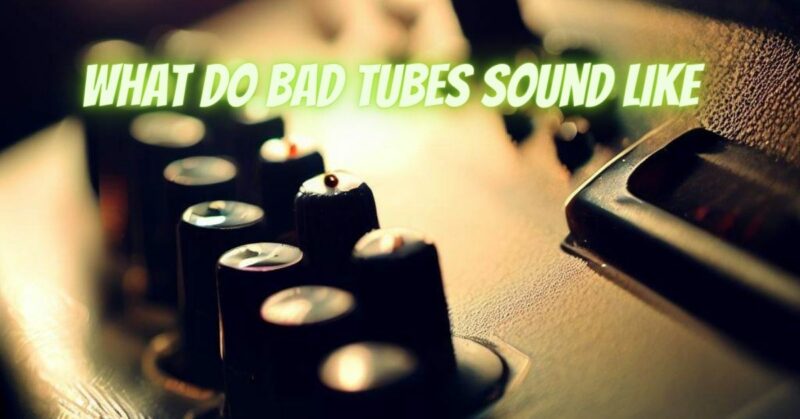Tubes play a vital role in the tone and performance of a guitar amplifier. Over time, tubes can wear out or become faulty, affecting the sound quality and overall performance of the amp. It’s important to be able to recognize the signs of bad tubes to address the issue promptly and restore optimal tone. In this article, we will explore common indicators of bad tubes in a guitar amp, helping you identify when it’s time to replace them.
- Distorted or Muddy Sound: One of the most noticeable signs of bad tubes is a distorted or muddy sound. The amp may produce unwanted overdrive, even at low volume settings. The distortion may lack clarity and definition, resulting in a muffled or mushy tone. If your amp suddenly sounds significantly different or exhibits a loss of clarity, it could indicate faulty tubes.
- Excessive Hum or Hiss: Bad tubes can introduce excessive hum or hiss into the amp’s signal. If you notice a persistent background noise that is louder than usual, it may be a sign of tube-related issues. The hum or hiss may increase as you turn up the volume or gain settings on the amp.
- Intermittent or Fluctuating Volume: Fluctuating volume levels or sudden drops in volume can be a symptom of bad tubes. If the volume output becomes inconsistent, with noticeable changes in volume even when the settings remain the same, it suggests a tube problem. Tubes that are failing or weak may cause volume fluctuations during play.
- Excessive Microphonics: Microphonics occur when tubes become overly sensitive to vibrations, resulting in squealing, feedback, or ringing sounds. If your amp exhibits excessive microphonics, such as feedback when you tap on the tubes or when you move the amp, it may indicate tube issues.
- Delayed or No Sound: In some cases, bad tubes may result in a delayed or no sound output from the amp. You may experience a delay in sound when you play or complete silence. This can occur when tubes fail to amplify the signal properly or when they have completely stopped working.
- Red Plating: Red plating refers to the red glow appearing on the plates of power tubes. If you notice any power tubes emitting a glowing red color on the plates, it is an indication of tube failure. Red plating usually accompanies a loss of power, distorted sound, or other tube-related issues.
- Compare with Known Working Tubes: To further confirm if the tubes are the cause of the problem, you can compare the amp’s performance with known working tubes. Swapping out suspect tubes with new or known good tubes can help determine if the issue lies specifically with the tubes.
Conclusion:
Recognizing the signs of bad tubes in a guitar amp is crucial for maintaining optimal sound quality. By paying attention to distorted or muddy sound, excessive hum or hiss, fluctuating volume, excessive microphonics, delayed or no sound, and the presence of red plating, you can identify if your tubes are in need of replacement. Consult the amp’s manual or a qualified technician to ensure you choose the appropriate replacement tubes for your amp model. Regularly inspecting and maintaining your tubes will help preserve the desired tone and performance of your guitar amplifier.


